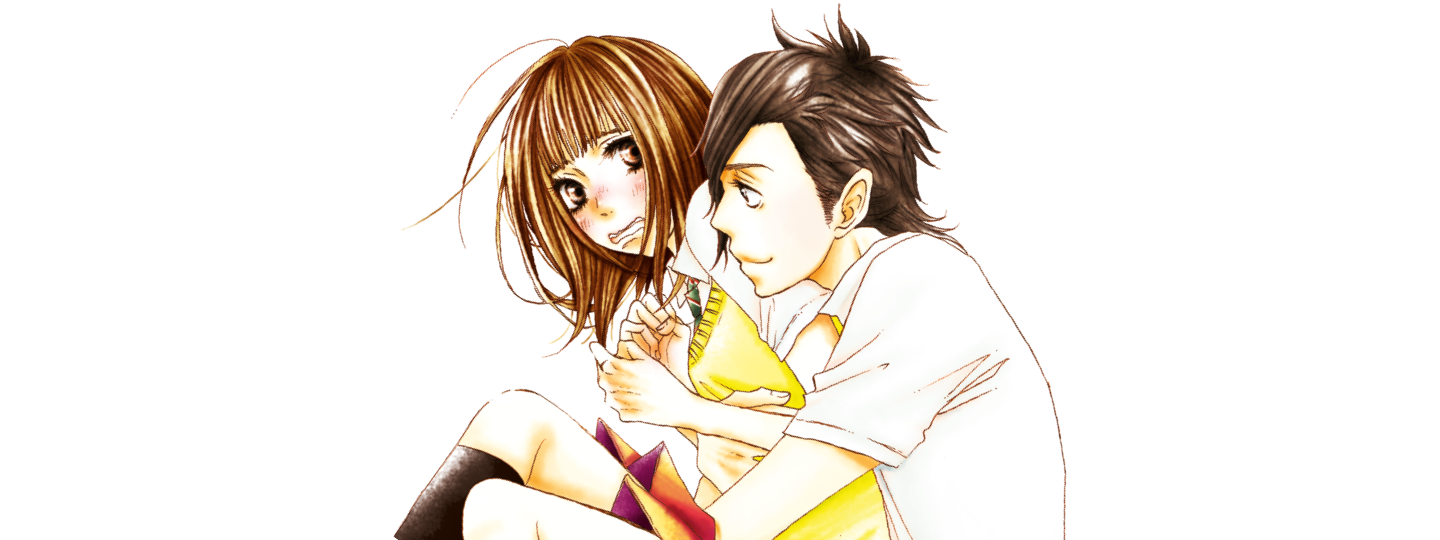Manga Say I Love You? Yo, this ain’t your average shoujo manga. It’s a total rollercoaster of awkward first loves, finding your squad, and dealing with some seriously real high school drama. We’re talkin’ about Mei Tachibana’s epic journey from total loner to, well, maybe not a total party animal, but definitely someone who learns to open up and connect.
Get ready for some serious feels, some killer character development, and a story that’s way more relatable than you’d think.
This deep dive explores the manga’s popularity, the awesome characters (Mei and Yamato are total goals, right?), the themes that hit home, the art style that’s seriously on point, and the lasting impact it’s had on the romance manga game. Prepare for a total blast from the past – or maybe a fresh new obsession, depending on whether you’ve already fallen for this series.
Say I Love You: A Deep Dive into the Manga Phenomenon
Say I Love You, a romance manga by Kanae Hazuki, captivated a generation with its relatable characters, heartwarming moments, and exploration of complex relationships. This article delves into the manga’s popularity, character development, thematic explorations, artistic style, and lasting impact on the romance genre. Get ready for a totally rad deep dive into this awesome manga!
Popularity and Trends of “Say I Love You”
The manga’s popularity steadily grew, establishing a dedicated fanbase. While precise sales figures are difficult to obtain for all regions and formats, its consistent publication and anime adaptation point to considerable success. The following timeline highlights key moments:
- Early 2000s: Serialization begins in Bessatsu Margaret, building a loyal readership.
- Mid-2000s: Increasing popularity leads to wider recognition within the shojo manga community.
- Late 2000s: Anime adaptation boosts global awareness and expands the fanbase.
- 2010s-Present: Continued popularity through digital releases and ongoing discussions within online communities.
Compared to other romance manga of the same era, “Say I Love You” distinguished itself through its realistic portrayal of high school relationships and character development. While direct sales comparisons are challenging to find, the manga’s consistent presence in “best of” lists and online discussions suggests it achieved significant success.
The manga primarily appeals to a young adult female demographic (13-25), but it also attracts a broader audience interested in realistic relationship dynamics and character growth. The relatable characters and exploration of common teenage experiences make it appealing across a wider age range.
| Media | Performance (Qualitative) | Fan Reception (Qualitative) | Notes |
|---|---|---|---|
| Print Manga | Strong sales, multiple volumes published | Positive, large and dedicated fanbase | Consistent presence in bookstores and online retailers |
| Digital Manga | High downloads and purchases across platforms | Positive, readily available for international audience | Accessibility through various digital platforms |
| Anime Adaptation | Moderate viewership, positive reviews | Generally positive, expanded fanbase | Increased global recognition and visibility |
Character Analysis in “Say I Love You”
The characters in “Say I Love You” are deeply developed, each with their own unique struggles and triumphs. Their growth and relationships are central to the story’s appeal.
You also can investigate more thoroughly about bleach manga to enhance your awareness in the field of bleach manga.
Mei Tachibana’s journey is one of self-discovery and overcoming social anxiety. Initially withdrawn and isolated, she gradually blossoms into a confident young woman capable of expressing her feelings and forging meaningful connections. Her transformation is gradual and believable, resonating with readers who have experienced similar challenges.
Mei and Yamato Kurosawa, while initially very different, share a deep connection built on mutual understanding and respect. Mei’s quiet nature contrasts with Yamato’s outgoing personality, but their shared vulnerabilities and emotional intelligence form the foundation of their relationship. Their differences create compelling conflict and growth throughout the series.
Supporting characters, such as Aika and Kenji, play crucial roles in shaping Mei and Yamato’s relationship. Aika’s unwavering friendship provides Mei with essential support, while Kenji’s presence adds complexity and challenges to Yamato’s perspective.
Here are character profiles for Mei and Yamato:
- Mei Tachibana:
- Motivations: To overcome her social anxiety, build meaningful relationships, and find love.
- Strengths: Intelligent, kind, compassionate, artistic.
- Weaknesses: Shy, insecure, prone to self-doubt.
- Relationships: Close friendship with Aika, romantic relationship with Yamato.
- Yamato Kurosawa:
- Motivations: To protect Mei, build a strong relationship with her, and overcome his own past traumas.
- Strengths: Confident, protective, caring, emotionally intelligent.
- Weaknesses: Can be possessive, struggles with expressing his feelings openly.
- Relationships: Romantic relationship with Mei, close friendship with Kenji.
Thematic Exploration in “Say I Love You”
Beyond the romance, “Say I Love You” explores significant themes of adolescence and young adulthood.
Social isolation and overcoming personal insecurities are central themes. Mei’s journey exemplifies the struggle to connect with others and build confidence. The manga shows the power of friendship and support in overcoming these challenges. Aika’s unwavering friendship provides a crucial counterpoint to Mei’s isolation, demonstrating the importance of supportive relationships.
First love is depicted realistically, showcasing the excitement, anxieties, and challenges of navigating romantic relationships. The manga doesn’t shy away from the complexities of communication and self-expression, highlighting the importance of open and honest communication in building strong relationships. The misunderstandings and conflicts between Mei and Yamato demonstrate the importance of clear communication and empathy.
Artistic and Narrative Style of “Say I Love You”: Manga Say I Love You

The manga’s art style is clean and expressive, effectively conveying emotions through character expressions and body language. The paneling is dynamic, creating a sense of movement and energy, especially during emotionally charged scenes. The use of close-ups and detailed expressions enhances the emotional impact of key moments, drawing the reader into the characters’ experiences.
The narrative unfolds gradually, allowing for character development and relationship building. The pacing is deliberate, allowing the reader to connect with the characters and their emotional journeys. The story arc is well-structured, building to satisfying resolutions while still leaving room for reflection on the characters’ growth.
Visual metaphors are subtly incorporated throughout the manga. For instance, the use of rain often accompanies moments of sadness or reflection, symbolizing the characters’ emotional states. Similarly, scenes in brighter settings often correlate with periods of happiness and growth.
Impact and Legacy of “Say I Love You”
While “Say I Love You” might not have revolutionized the romance genre in the same way some other titles have, its impact is notable for its realistic portrayal of relationships and its focus on character development.
Its influence can be seen in subsequent romance manga that prioritize realistic character interactions and emotional depth. The manga’s resonance with readers lies in its relatable characters and exploration of universal themes of love, friendship, and self-discovery. Critical reception has been largely positive, praising the manga’s emotional honesty and well-developed characters.
| Adaptation | Release Date (Approximate) | Reception (Qualitative) | Notes |
|---|---|---|---|
| Anime Series | 2013 | Generally positive, expanded fanbase | Increased global recognition and visibility |
| Live-Action Film (Potential) | N/A | N/A | Potential for future adaptations |
So, yeah, “Manga Say I Love You” is more than just a cute romance. It’s a story about growth, friendship, and finding your voice. Mei’s journey is inspiring, Yamato’s got that irresistible charm, and the supporting cast is straight fire. Whether you’re a seasoned manga reader or just dipping your toes into the genre, this manga’s worth checking out.
It’s totally relatable, emotionally resonant, and leaves you with that warm fuzzy feeling long after you finish the last page. It’s a total classic for a reason, you know?



